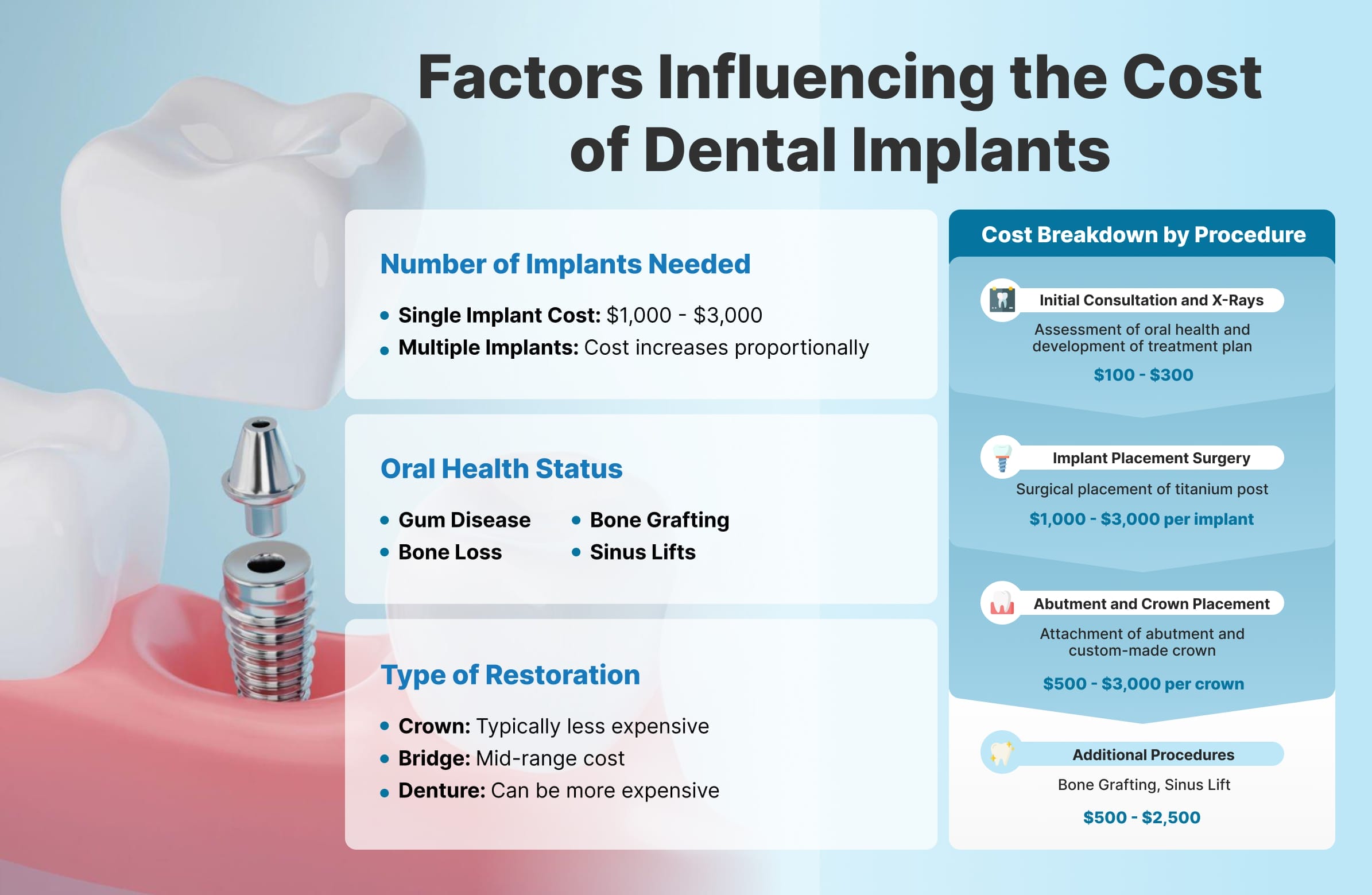3 Simple Techniques For Dental Sense
3 Simple Techniques For Dental Sense
Blog Article
Get This Report about Dental Sense
Table of ContentsGetting My Dental Sense To WorkThe Only Guide for Dental SenseUnknown Facts About Dental SenseThe Ultimate Guide To Dental Sense
are clinical gadgets surgically implanted right into the jaw to restore an individual's ability to chew or their look. They supply assistance for man-made (phony) teeth, such as crowns, bridges, or dentures. When a tooth is lost as a result of injury or illness, a person can experience complications such as rapid bone loss, malfunctioning speech, or changes to chewing patterns that cause pain.Dental dental implant systems are composed of a dental implant body and oral implant abutment and may also include a joint addiction screw. Wisdom tooth cavity. The oral implant body is surgically inserted in the jawbone instead of the tooth's root. The dental implant abutment is generally affixed to the dental implant body by the abutment addiction screw and extends via gum tissues right into the mouth to support the attached synthetic teeth
(https://anyflip.com/homepage/wpqva#About)Structure of The Dental Implant System choosing oral implants, speak to your dental company regarding the potential benefits and dangers, and whether you are a candidate for the procedure. Points to consider: Your general health is a crucial variable in figuring out whether you are a great candidate for dental implants, exactly how long it will certainly require to heal, and for how long the implant might remain in place.
Smoking may impact the healing process and decrease the long-term success of the dental implant. The healing procedure for the dental implant body might take several months or longer, throughout which time you usually have a momentary joint in location of the tooth. the oral implant treatment: Carefully adhere to the oral health directions offered to you by your oral company.
9 Simple Techniques For Dental Sense
Implant failing can cause the requirement for an additional surgical treatment to fix or replace the dental implant system. Restores the ability to eat Brings back cosmetic look Helps maintain the jawbone from diminishing as a result of bone loss Protects the health of the surrounding bone and gums Assists maintain surrounding (neighboring) teeth stable Enhances lifestyle Damages to bordering all-natural teeth throughout dental implant placement Injury to the surrounding cells throughout surgery, such as sinus perforation Injury during surgical treatment (as an example, crack of bordering jawbone) Inadequate feature, such as seeming like the teeth do not bite with each other normally A sensation that the tooth hangs or turning in position arising from an abutment screw loosening Implant body failing (looseness of the dental implant body) due to systemic infection, which may be extra most likely in patients with uncontrolled diabetes mellitus as a result of local infection in bone and gums supporting the dental implant body due to delayed recovery, which may be more likely in patients that smoke Problem cleaning the gums around the implant, resulting in poor oral health Untreated gum condition Post-surgical pins and needles due to nerve impingement or damages Constantly inform healthcare providers and imaging professionals that you have dental implants before any kind of magnetic resonance imaging (MRI) or x-ray procedures.
FDA is not familiar with any type of negative occasions reported for MRI or x-ray procedures with oral implants. Dental implants systems are usually made of materials that follow worldwide consensus criteria of the International Organization for Standardization (ISO) or ASTM International. These standards have information of what makes a secure material.

An oral implant is a framework that replaces a missing out on tooth. With screw-like devices, the surgeon inserts an implant right into the jawbone, and it acts as a support for an artificial tooth, called a crown.
The smart Trick of Dental Sense That Nobody is Talking About
Some individuals are not qualified for oral implant surgery. It is for dental cosmetic surgeons to operate people with: severe illnessuncontrollable metabolic diseasebone or soft tissue illness or infectionIf these problems are fixed, a person can have the surgery. In, dental cosmetic surgeons abstain from operating on people with: If individuals with any of the above undergo dental implant surgical procedure, there is a higher danger of the implant failing.

Dental implant surgical treatment is a personalized procedure. It's not the very same for everybody. Yet the adhering to gives a basic summary of what you can anticipate your dental practitioner, oral surgeon, periodontist or prosthodontist to do: Put the dental implant surgically. Offer you time to recover. Affix the article and last crown, bridge or denture.
Next off, your cosmetic surgeon will thoroughly put the oral implant into your jaw. Finally, your specialist will rearrange your gum tissues and close the cut with stitches. If your implant is near the front of your mouth, your dentist will make a short-term tooth for you to wear until you recover. In this way, you will not have a space in your smile while you recover.
How Dental Sense can Save You Time, Stress, and Money.
Your service provider can inform you what to expect in your circumstance. During the healing phase, your jawbone needs to fuse to the oral implant. This procedure, called osseointegration, is critical for stability and lasting success. This procedure can take anywhere from 3 to nine months. Sometimes, it might take longer.
When your dental implant heals, your dental practitioner can connect the joint (small port blog post) and your last repair (crown, bridge or denture). This usually takes regarding one hour to finish and might call for a 2nd small surgical treatment. You should not feel any kind of discomfort throughout your oral implant treatment due to the fact that your company will certainly make use of drug to numb your gums.
Report this page